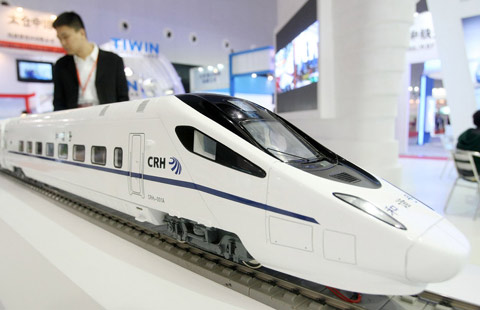Smaller, smarter buys yield big results
Updated: 2015-06-12 06:46
By Cecily Liu(China Daily Europe)
|
|||||||||||
Chinese companies are growing using technology gained through European acquisitions
Chinese companies are gaining a new level of global competitive strength by combining domestic product and market scale with niche technology acquired abroad, says Peter Williamson, professor of international management at the University of Cambridge's Judge Business School.
This trend is crucial to growing Chinese overseas mergers and acquisitions, in which Chinese companies integrate technology from target firms to improve production for China's domestic market and to improve competitiveness globally, Williamson says.
He says this trend started around 2010, during recessionary years after the world financial crisis. It is distinct in strategy from earlier Chinese M&A activities focused mostly on market share or resources.
Since 2000, Chinese companies made a number of acquisitions of large overseas companies having financial difficulties, in an attempt to gain market share. Examples included SAIC Motor's acquisition of South Korean automaker SsangYong Motor, and also TCL's acquisition of Thomson Electronics of France.
"These acquisitions were unsuccessful because the target companies were in bad health, so the management faced a difficult challenge trying to turn them around," Williamson says.
That led many Chinese enterprises to pursue a different approach, starting between 2007-2010, buying resources companies in Australia, Africa and Latin America. They felt more comfortable buying hard assets and raw materials.
But since then, Chinese companies have increasingly realized the need to strengthen their technology and research and development to become truly competitive companies.

"I think Chinese companies are good at product development and process engineering to make things quickly and on a large scale, but they lacked the core technologies to make leading-edge products. After the financial crisis, many firms in developed markets lacked investments and were willing to sell to Chinese firms," he says.
One example is the Chinese telecommunications giant Huawei's 2012 acquisition of the UK firm Centre for Integrated Photonics Ltd, a small company located in Ipswich with great R&D capabilities. Another example is the Chinese banking group ICBC buying the London-based global markets arm of Standard Bank last year.
Compared with the first wave of Chinese overseas acquisitions, which focused on much larger targets, the acquisitions of smaller and niche sector technology companies are easier to manage. "You don't have thousands of workers to manage; you don't have factories that are broken. What you have is a small number of highly qualified engineers, or bankers, who are people who know the local environment, so the challenge now is that you need to motivate them," Williamson says.
Smaller companies are also easier to acquire, as they tend to be less politically sensitive. The amount of media exposure and public attention they receive is much smaller, he says.
Williamson says these acquisitions are successful because Chinese companies have by now figured out how best to do post-acquisition integration. Key is the retention of management of the companies and new investment to expand the target's research capacity.
Chinese buyers often send few top managers to the acquired companies, and those they do send are often liaisons facilitating communication between headquarters and local management.
Instead, the Chinese headquarters send many engineers and technicians, who can work alongside the engineers and technicians of the acquired targets so they can participate in the R&D and maximize opportunities to integrate the R&D into the Chinese operations.
Williamson says this is a good strategy because the technology and expertise taken from the acquisitions can immediately produce a benefit in the large Chinese market, and create value for the buyers' existing customer base. Once they have fully integrated the new technology into strengthening their own operations, they can build on this base to conquer international markets.
One successful case study for post-acquisition integration is the Chinese chemical company ChemChina's 2005 acquisition of Adisseo from Drakkar Holdings of Belgium. Adisseo, a market leader in making feed to improve the growth rate of animals, is now well established in China through the partnership with ChemChina.
Williamson says Huawei's acquisition of the Centre for Integrated Photonics is also considered very successful because Huawei is now launching the first products developed through CIP's technology after the acquisition. This takes the acquisition to the next level of strength, which is globalization of the Chinese company.
"Expanding globally is the second stage of the acquisition strategy, which would take about three to five years to achieve. You need to first understand the company you've acquired, and then put the new technology into products. Maybe in about five years you can strengthen your position in China, and then win the market internationally," he says.
Williamson says because the management and employees of the target company are so important under this new acquisition strategy, it is critical to understand how to motivate them.
"It's a balance because if you are too hands off, you don't gain anything, and you don't know where the European management will take the company, but also if you are too heavy-handed, you will demotivate the people and won't be very successful," he says.
Although many European managers initially had reservations about being acquired by a Chinese company, their reservations were easily overcome when they saw the growth opportunities for their companies in China, and the willingness of the Chinese headquarters to invest in local operations.
"It's also important that the Chinese buyers make sure the European management spends time in China. They need to get to know the parent and become close to the management."
Another key cultural barrier to overcome is that of corporate culture differences between big and small companies.
Chinese firms need to send their subsidiaries managers who both understand the local operations and have credibility back at headquarters, to act as a bridge between the two.
"They need to say to the headquarters, 'You should do this, and you shouldn't do that, because if you do that you will kill the company you have bought'. This may prove to be challenging, as Chinese firms have only started to work in the international markets in the past 10 years, and don't have so many internationally minded managers," he says.
Many of these acquisition partnerships can eventually result in the Chinese headquarters and the acquired subsidiaries working together globally, creating world-class Chinese firms.
"The Chinese companies have the opportunity to become the best globally if they can access the world's best technology through acquisition and add it to their proven competitive strengths: Speed and flexibility, as well as the efficient design and manufacturing process," he says.
Chinese enterprises also may be increasingly competing with US companies, which also focus on overseas acquisitions for the benefit of their large domestic market. In this competition, US companies are better positioned to acquire larger companies and less-healthy ones as they have the experience to turn around unsuccessful ventures, and Chinese companies are better placed to buy smaller ones where they can focus on building good relationships with the management team, Williamson says.
"It's better for Chinese firms to buy a smaller company where they can build a good relationship with the owners. Often these firms may already have some partnerships with Chinese suppliers or distributors, and want to access the China opportunity, but they lack capital and a route to market.
"In the future, there won't be so many easy acquisitions, but there will remain many medium-sized firms in Europe that can't grow because they can't get into China, Africa, or Latin America, and I think Chinese companies can use acquisitions to help capture these opportunities," he says.
cecily.liu@chinadaily.com.cn
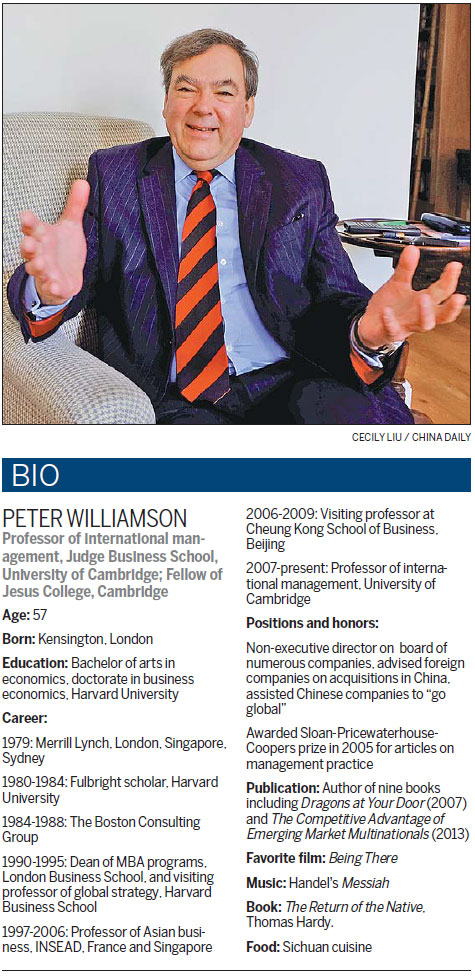
( China Daily European Weekly 06/12/2015 page32)
Today's Top News
Zhou Yongkang sentenced to life in prison
Kiev announces new round of peace talks on Ukraine crisis
Greece, EU powers agree to step up debt talks as crunch looms
EU sanctions hamper Italian-Russian commercial ties: Putin
Suu Kyi begins groundbreaking visit
G7 'ignore the facts over South China Sea'
British PM hails 'golden year' in UK-China relations
China's new rail giant bags first overseas deal from India
Hot Topics
Lunar probe , China growth forecasts, Emission rules get tougher, China seen through 'colored lens', International board,
Editor's Picks

|
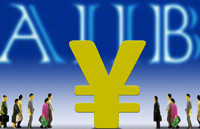
|
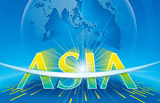
|

|

|
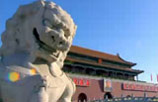
|


